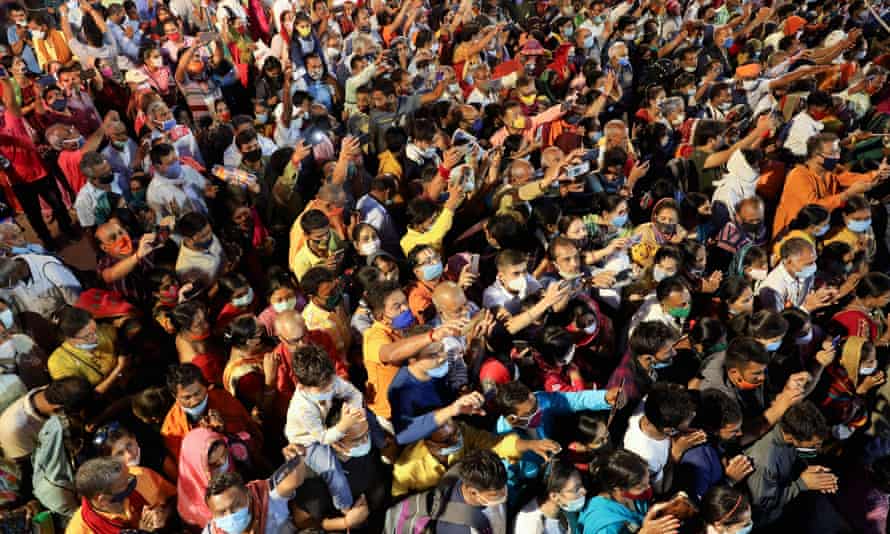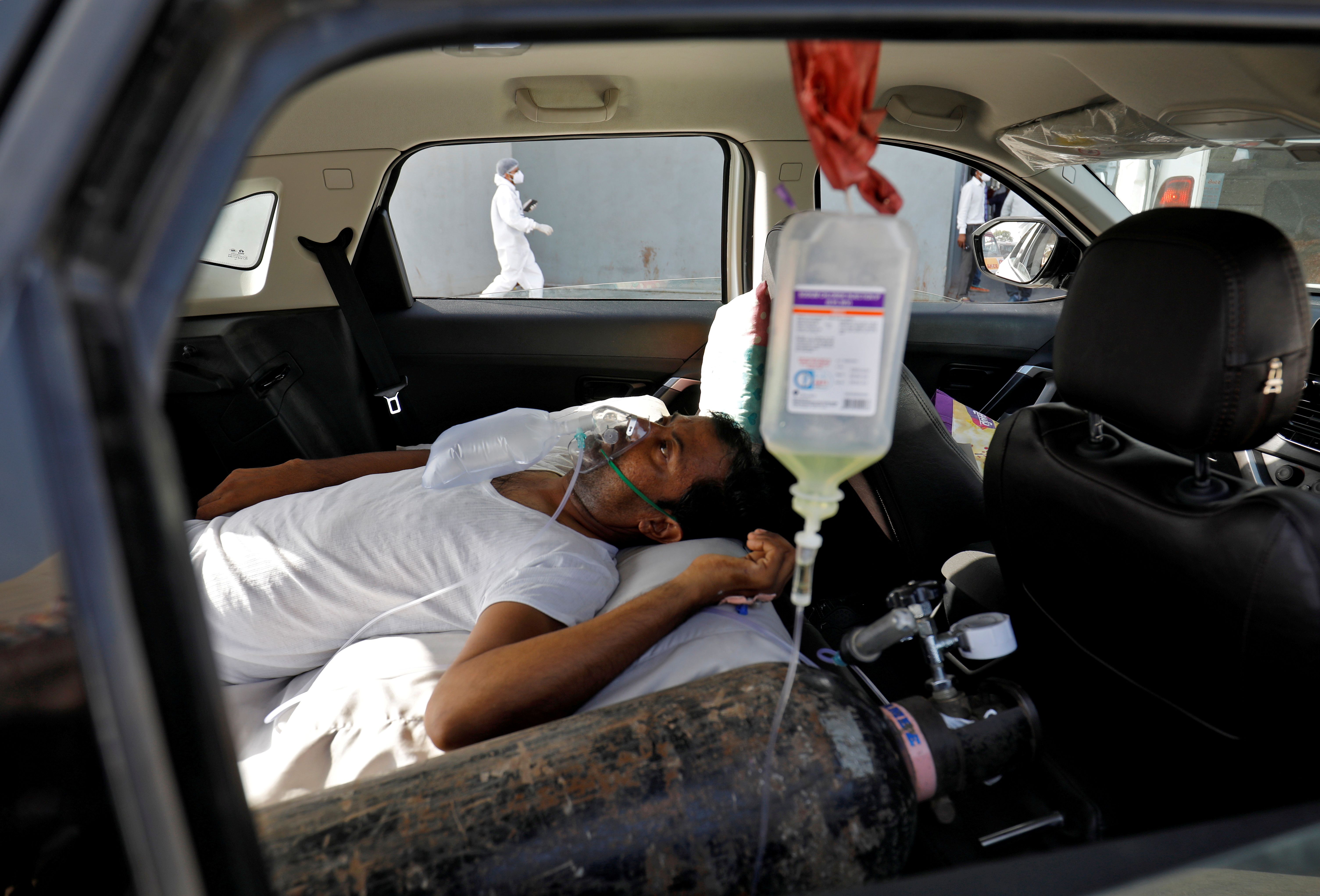Re-Opening Precipitately? Look at India
"I think the problem is that what we are seeing is that this idea of herd immunity is messy.""Whether we're talking about a single mutant or double mutant or triple mutant, we're seeing quite a few different mutations.""The real question for us is figuring out, as quickly as possible, with India, what does this variant mean? Is there a correlation between B.1.617 and the crisis that they're in right now [does it have enhanced properties?} For Canadians, that's the information we need to know."What does it tell us from our own personal standpoint? It tells us we are still dealing with the same virus.We've got to be vigilant with that stuff if we don't want to see this new variant, or any other variant, transmitting widely through our community. Because once it hits a tipping point, we can't stop it in its tracks."Jason Kindrachuk, virologist, University of Manitoba"[Following the first wave in India the numbers started nose-diving early in the New Year], and everybody started celebrating, declaring success, that 'we're out of the woods'.""And we thought a good proportion of Indians would have gotten naturally infected last year and would have antibodies, and then vaccination started.""And then the Indian government, in its wisdom, opened up in a hurry. No social distancing [as millions attended religious festivals and super-spreader political rallies], masking went down, public health measures were relaxed and testing went down.""And then we started to see the number climb again. You've seen the graph, right? It looks like a rocket going up. I've never seen anything like it."Dr. Madhukar Pai, Canada Research Chair in epidemiology and global health, McGill University
 |
| Paramedics wearing protective equipment wheel a patient into the emergency department at Toronto's Mount Sinai Hospital. THE CANADIAN PRESS/Chris Young |
A
directive was issued to hospitals in Ontario in April that non-urgent
care in the operating room must cease. Surgeons, nurses and anesthetists
should be prepared to redeploy to the COVID wards and the ICU. Triage
meetings have become regular events to discuss which of the cases
presenting must be sent to the operating room and which patient appears
on the brink of permanent or irreparable harm, and that person must then
wait -- 'declined'. This is called the reality response to a desperate
situation.
India's
catastrophic COVID-19 wave has brought with it a dire situation with
doctors sending out SOS messages pleading for oxygen. It is where
opportunistic variants are now beginning to spread widely in Canada,
causing great alarm, but in comparison to the situation in India, a mere
ripple as opposed to that nation's riptide of illness. On a number of
recent consecutive days India has posted unbelievably huge single daily
COVID caseloads such as 332,730 cases and 2,263 deaths. Daily.
Mind-boggling.
New Delhi, the nation's capital, is riddled through with COVID cases and they continue to rise. "If we open up everything, give up on public health and not vaccinate rapidly the new variants can be devastating",
warned Dr. Madhukar Pai of McGill University. It is as yet unknown
whether India's growing caseload owes to new infections or how much
reinfection is involved. Studies out of Manaus in Brazil suggest that up
to half the population in some of India's largest cities had been
infected previously in the first wave, resulting in a fairly high
immunity in the population.
Only
now has Canada officially closed the air corridor for a month for
direct-passenger flights from India and Pakistan to enter Canada. Too
late, unfortunately, to prevent a new 'double mutant' from arriving. The
B.1.617 variant has already been identified in British Columbia, Quebec
and Alberta. "Variants of concern" now account for over half of confirmed COVID-19 infections in Canada, Friday's new modelling confirm.
In
the Greater Toronto Area patient transfers are increasing, COVID
patients being sent to other, less-crowded hospitals in Ontario to
relieve some Toronto hospitals briefly, before even more patients
arrive, as anticipated. Pregnant women are now being over-represented in
Toronto hospitals with COVID, populating ICUs, requiring emergency
C-sections. A new phenomenon has arisen where an average of two people a
day die at home, becoming critically ill so suddenly there is no
opportunity for them to arrive at a hospital.
 |
| Despite the Covid-19 surge, crowds have been allowed to gather for Kumbh Mela in Haridwar, India. Photograph: Anushree Fadnavis/Reuters |
Word of a "triple mutant"
virus detected now in India has turned the heads of virologists and
infectious disease specialists. There is speculation, but no hard data
available, about how these variants behave together, or on the
background of other mutations. The variants all carry an alphanumeric
soup of mutations, some more threatening than others. B.1.617 is imbued
with several mutations shared by other variants shown to have a measure
of antigenic escape; in other words the capacity of a virus to evade its
host's immune system.
The
situation is so grave it is imperative that vaccinations be sped up by
all necessary means. Complicated by the reality that vaccines are in
short supply, thanks to the incompetence of the federal government that
chose early on to do business with China, until that fell through and
vaccines had to be sourced elsewhere, late in the game, through more
infinitely reliable venues. Masking, distancing and all other infection
prevention control measures continue to be in mind of everyone in an
effort to control as much as possible, the trajectory of the coronavirus
surge.
 |
| A patient with breathing problems is seen inside a car while waiting to enter a COVID-19 hospital for treatment Reuters |
Deaths
are known to be under-reported in India, with infections likelier to
reflect three million per day, than the official tallies. Space to
cremate people is no longer so readily accommodated; there are simply
too many to deal with. The vaccination programs are not proceeding as
speedily as they should. Vaccine production in India has run into
difficulties with the emergence of a scarcity of supplies for which they
have turned to the U.S. to expedite the materials needed, held there in
greater abundance. India is no longer releasing vaccines outside their
interior emergency, and the U.S. is reluctant to release materials they
may themselves need. A deadly spiral.
Entire
families are becoming ill, the young being infected along with all
others in India, and similar reports are beginning to come out of
Ontario, with entire families arriving at hospitals with COVID. People
in their 30s or 20s in intensive care. Natural acquired immunity may not
be adequate in protecting from the new variants, Dr. Pai worries.
"But we really need to see this as a global problem. If you have fires
raging in India, or Brazil, or somewhere else next month, we will never
get out of these pandemic cycles."
 |
| A mass cremation of victims who died due to the coronavirus disease (COVID-19), is seen at a crematorium ground in New Delhi Reuters |
Labels: Catastrophic COVID Wave. Ontario Pandemic Emergency, India, Mutant Strains

<< Home